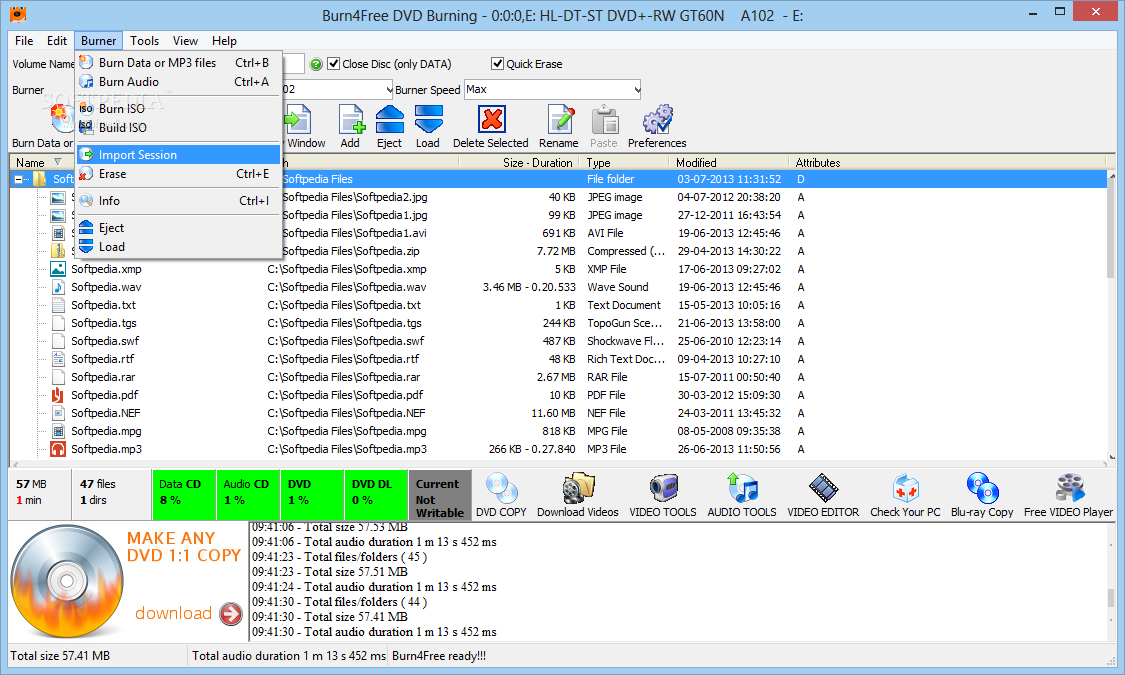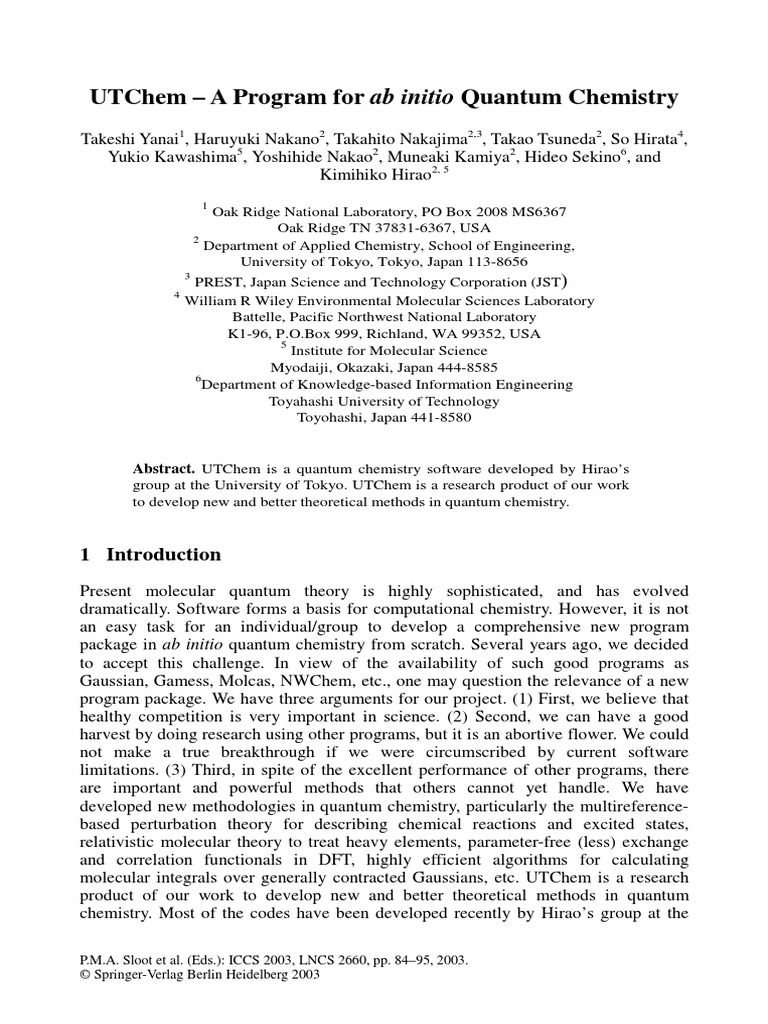Utchem Software Download Free

AbstractA free software application, RVA, has been developed as a plugin to the US DOE-funded ParaView visualization package, to provide support in the visualization and analysis of complex reservoirs being managed using multi-fluid EOR techniques. RVA, for Reservoir Visualization and Analysis, was developed as an open-source plugin to the 64 bit Windows version of ParaView 3.14. RVA was developed at the University of Illinois at Urbana-Champaign, with contributions from the Illinois State Geological Survey, Department of Computer Science and National Center for Supercomputing Applications. RVA was designed to utilize and enhance the state-of-the-art visualization capabilities within ParaView, readily allowing joint visualization of geologic framework and reservoir fluid simulation model results. Particular emphasis was placed on enabling visualization and analysis of simulation results highlighting multiple fluid phases, multiple properties for each fluid phase (including flow lines), multiple geologic models and multiple time steps. Additional advanced functionality was provided through the development of custom code to implement data mining capabilities. The built-in functionality of ParaView provides the capacity to process and visualize data sets ranging from small models on local desktop systems to extremely large models created and stored on remote supercomputers.
The RVA plugin that we developed and the associated User Manual provide improved functionality through new software tools, and instruction in the use of ParaView-RVA, targeted to petroleum engineers and geologists in industry and research. The RVA web site (provides an overview of functions, and the development web site (provides ready access to the source code, compiled binaries, user manual, and a suite of demonstration data sets. RVA is a plugin developed for the 64-bit Windows version of the ParaView 3.14 visualization package. RVA is designed to provide support in the visualization and analysis of complex reservoirs being managed using multi-fluid EOR techniques. RVA, for Reservoir Visualization and Analysis, was developed at the University of Illinois at Urbana-Champaign, with contributions from the Illinois State Geological Survey, Department of Computer Science and National Center for Supercomputing Applications. RVA was designed to utilize and enhance the state-of-the-art visualization capabilities within ParaView, readily allowing joint visualization of geologic framework and reservoir fluid simulation model results. Particular emphasis was placed on enabling visualization and analysis of simulation results highlighting multiple fluid phases, multiple properties for each fluid phase (including flow lines), multiple geologic models and multiple time steps.
Utchem Software Download Free
Additional advanced functionality was provided through the development of custom code to implement data mining capabilities. The built-in functionality of ParaView provides the capacity to process and visualize data sets ranging from small models on local desktop systems to extremely large models created and stored on remote supercomputers. The RVA plugin that we developed and the associated User Manual provide improved functionality through new software tools, and instruction in the use of ParaView-RVA, targeted to petroleum engineers and geologists in industry and research.
The RVA web site (provides an overview of functions, and the development web site (provides ready access to the source code, compiled binaries, user manual, and a suite of demonstration data sets. Most of the fieldwide fluid movement monitoring techniques under utilize available computer resources. This paper discusses an approach reservoir management engineers use to monitor fluid movement in reservoirs with a multitude of wells. This approach allows the engineer to maintain up-to-date fluid movement studies and incorporate the latest information from data acquisition programs into the day to day decision-making process. The approach uses several in-house database applications and makes extensive use of commercially available software products to generate and visualize cross-sections, maps, and 3-d models. This paper reviews the computerized procedures to create cross-sections that display the current fluid contacts overlaying the lithology.
It also reviews the mapping procedures nd presents examples of water encroachment maps by layer at specific time periods. 3-D geologic modeling software greatly enhances the visualization of the reservoir. This software can also be used to interpret and model fluid movement, given the appropriate engineering constraints. Understanding multi-phase fluid flow and transport processes within aquifers, candidate reservoirs for CO 2 sequestration, and petroleum reservoirs requires understanding a diverse set of geologic properties of the aquifer or reservoir, over a wide range of spatial and temporal scales. We focus on multiphase flow dynamics with wetting (e.g., water) and non-wetting (e.g., gas or oil) fluids, with one invading another. This problem is of general interest in a number of fields and is illustrated here by considering the sweep efficiency of oil during a waterflood. Using a relatively fine-resolution grid throughout a relatively large domain in these simulations and probing the results with advanced scientific visualization tools (Reservoir Visualization Analysis RVA/ ParaView software) promote a better understanding of how smaller-scale features affect the aggregate behavior at larger scales.
We studied the effects on oil-sweep efficiency of the proportion, hierarchical organization, and connectivity of high-permeability open-framework conglomerate (OFC) cross-sets within the multi-scale stratal architecture found in fluvial deposits. We further analyzed oil production rate, water breakthrough time, and spatial and temporal distribution of residual oil saturation. As expected, the effective permeability of the reservoir exhibits large-scale anisotropy created by the organization of OFC cross-sets within unit bars, and the organization of unit bars within compound- bars. As a result, oil-sweep efficiency critically depends on the direction of the pressure gradient. However, contrary to expectations, the total amount of trapped oil due to the effect of capillary trapping does not depend on the magnitude of the pressure gradient within the examined range. Hence the pressure difference between production and injection wells does not affect sweep efficiency; although the spatial distribution of oil remaining in the reservoir depends on this value. Whether or not clusters of connected OFC span the domain affects only the absolute rate of oil production—not sweep efficiency.
RAMSGAS, the Research and Development Analysis Modeling System World Natural Gas Model, was developed to support planning of unconventional gaseoues fuels research and development. The model is a scenario analysis tool that can simulate the penetration of unconventional gas into world markets for oil and gas. Given a set of parameter values, the model estimates the natural gas supply and demand for the world for the period from 1980 to 2030. RAMSGAS is based on a supply/demand framwork and also accounts for the non-renewable nature of gas resources. The model has three fundamental components: a demand module, a wellhead production cost module, and a supply/demand interface module. The demand for gas is a product of total demand for oil and gas in each of 9 demand regions and the gas share. Demand for oil and gas is forecast from the base year of 1980 through 2030 for each demand region, based on energy growth rates and price-induced conservation.
For each of 11 conventional and 19 unconventional gas supply regions, wellhead production costs are calculated. To these are added transportation and distribution costs estimates associated with moving gas from the supply region to each of the demand regions and any economic rents. Based on a weighted average of these costs and the world price of oil, fuel shares for gas and oil are computed for each demand region. The gas demand is the gas fuel share multiplied by the total demand for oil plus gas.
This demand is then met from the available supply regions in inverse proportion to the cost of gas from each region. The user has almost complete control over the cost estimates for each unconventional gas source in each year and thus can compare contributions from unconventional resources under different cost/price/demand scenarios.
Reservoir Simulators MPSThe objective of this project is to develop a reservoir simulator with the capability of simulating various recovery processes under one framework. This new simulator is designed to handle miscible gas flooding, chemical flooding, and thermal flooding processes for conventional and unconventional reservoirs.
The simulator will also have the capability of executing on parallel computers. The main goal of the project is development of a unified simulator capable of performing simulations for large complex reservoirs operating under various recovery processes. UTCHEMRSUTCHEMRS is a three-dimensional, chemical flooding reservoir simulator capable of modelling up to four-phase flow, namely, an aqueous phase, and oleic phase, a microemulsion phase, and a gas phase. An adaptive implicit method (AIM) with switching criteria based on stability analysis is implemented to improve both time-step size selection and performance. Reservoirs can be discretized using Cartesian and Corner-Point grids. A stable third order high resolution scheme is implemented for Cartesian grids, reducing the need for very fine grids and the effects of grid orientation.
Physical dispersion is modeled using a full dispersion tensor. Phase behavior is calculated using a three phase hands rule in the case of micellar flooding systems, steam tables in the case of steam injection, and black-oil model when the black-oil option is used. Salinity and divalent cation effects are considered for both micellar phase behavior and polymer properties. The Corey model with capillary desaturation capability is implemented to properly model ASP processes.
Other important effects such as polymer rheology and surfactant and polymer retention are also considered. Capabilities for modelling fractures through an Embedded Discrete Fracture Model is also included. Some of the applications for UTCHEMRS are:. Waterflood. Polymerflood.

Surfactant-Polymer flooding with salinity gradient. Alkaline-surfactant flooding. Alkaline-cosolvent flooding. Tracer tests.
Electrical heating. Hot water and steam injection. Fractured reservoirs. UTCOMPRSUTCOMPRS is a three-dimensional, EOS Compositional reservoir simulator capable of modelling up to four-phase flow, namely, an aqueous phase, and oleic phase, a gaseous phase, and a second nonaqueous liquid phase. An adaptive implicit method (AIM) with switching criteria based on stability analysis is implemented to improve both time-step size selection and performance. Reservoirs can be discretized using Cartesian, Corner-Point or Unstructured grids.
Stable high resolution schemes are also implemented for both Cartesian and Unstructured grids, reducing the need for very fine grids and the effects of grid orientation. Physical dispersion is modeled using a full dispersion tensor with an approach to handle viscous fingering. Phase behavior is calculated using the Peng-Robinson equation of state or a modified version of the Redlich-Kwong equation of state. A robust phase stability and flash calculation along with a phase identification algorithm provides a reliable and efficient phase behavior package within UTCOMPRS. Several relative permeability models are implemented, including models that consider hysteresis effects.
Capabilities for modelling fractures through an Embedded Discrete Fracture Model is also included. Some of the applications for UTCOMPRS are:. Miscible and immiscible gas injection processes. CO 2 sequestration.
Gas condensate reservoirs. Tracer tests. Mobility control using foam or polymer. Asphaltene precipitation and deposition. Fractured reservoirs. Water alternating gas injection. To become a sponsor of the Reservoir Simulation Joint Industry Research Project, please contact Dr.
Kamy Sephernoori to receive a copy of the research participation agreement to be executed by your company and The University of Texas at Austin. The membership fee for the project is USD $50,000 per year. As with all Industrial Affiliates programs at The University of Texas at Austin, intellectual property rights cannot be granted, and no specific reporting requirements may be imposed. However, we will host an annual workshop and provide papers, student theses and dissertations, and reports of our research accomplishments resulting from the project. RS-JIP members will have access to our computer codes upon their release. Members also receive updates as new versions of the codes become available.Contact information for Dr. Kamy SepehrnooriCenter for Petroleum and Geosystems EngineeringThe University of Texas at Austin200 E.

Dean Keeton C0304Austin, Texas Phone: (512) 471-0231 FAX: (512) 471-9678Email.